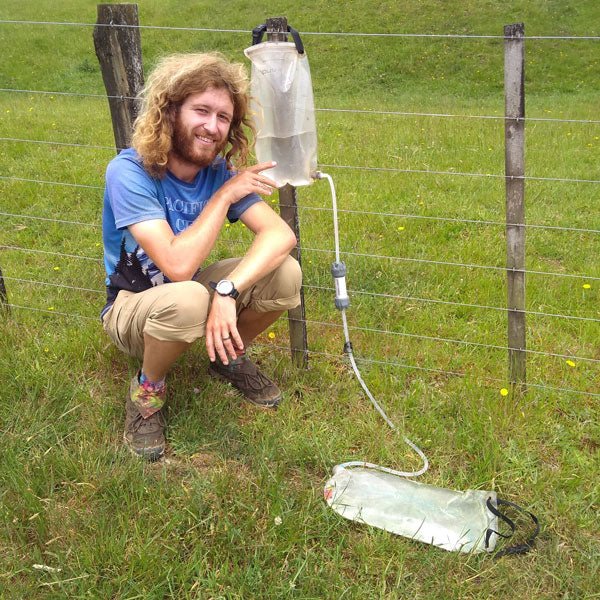
Buying Guide: Water Filters
A water filter is a really important piece of equipment in a backpacking, camping, or travel setup. Being able to filter water will save you from needing to carry excess clean water from the start of your trip. While you may get lucky drinking unfiltered streams, there are few things that are worse on a backpacking trip than being sick from contaminated water.
But which filter to get? Over the past few years, filters have evolved to become lighter, smaller, and more efficient than ever before. Not all filters are equally effective though. The perfect filter for a day of trail running in the Pacific Northwest might not be a great choice for backpacking in South America. In this post, I will help you find the perfect filter for your next adventure by differentiating between filters and purifiers (and explaining why one is more effective than the other), and by discussing the pros and cons of different filtering mechanisms. I will also discuss how to properly care for your new water filter, and share some of my favorite staff picks.
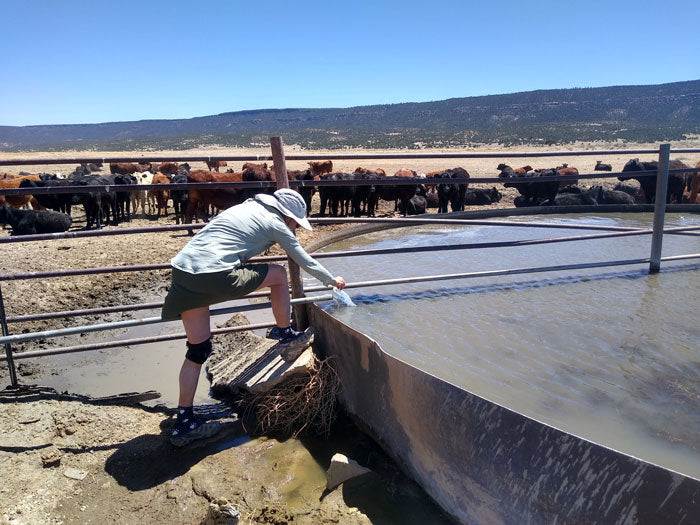 Water filtration can be VERY important!
Water filtration can be VERY important!To Begin... As always, you should begin by asking yourself a couple of important questions:
- Where do you plan to use your new filter?
- On what kind of trips will this filter be used?
Keep your answers in mind as you read on.
Filters vs. Purifiers
Colloquially, all these products are called filters; however, there are actually two different categories of water treatment: Filters, and Purifiers. This is where your selection of a water treatment system should begin. Think for a moment about what you might be filtering out of your water. One obvious answer might be solid particulates- dust and dirt, leaves, and anything that makes water look cloudy. These solid particulates are the largest contaminants found in water and can therefore be removed by filters and physical purifiers.
The next most common water contaminant is bacteria. Giardia, for example, is a common bacteria found in many natural water sources that will make you sick if not filtered out. And finally, there are viruses. Viruses that are occasionally found in water include norovirus and hepatitis A. On a microscopic scale, viruses are much smaller than bacteria. While purifiers will remove viruses and bacteria, most filters will let viruses travel right through them. So, when viruses might be present in a water source, it is important to use a water purifier, not a water filter.
Most backcountry water sources in the United States are not contaminated by viruses, so a filter will be sufficient for treating this water. However, many parts of the world do not have the same highly developed wastewater treatment facilities, and in these places, finding viruses in water is common. In many places, even tap water is unsafe to drink. When traveling in these countries, a purifier is necessary. For this reason, it is important to consider where you might use your water filter, and to do research into the contaminants you might need to remove from the water.
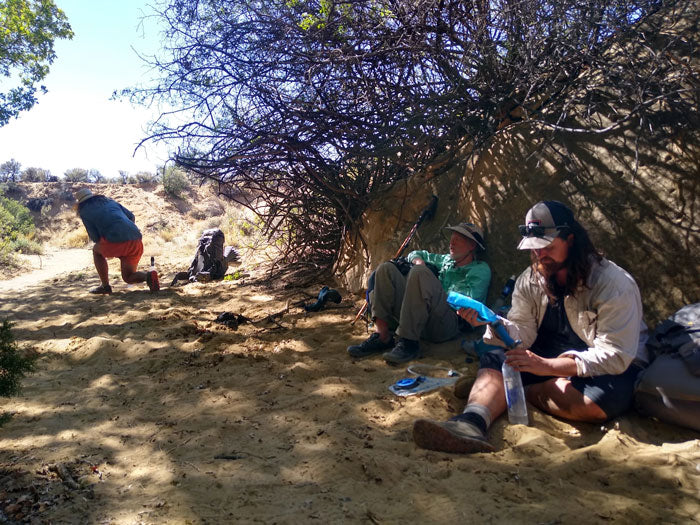
Types of Purifiers
Let’s begin with purifiers. Because viruses are so small (measured in nanometers), there are limited physical purifier options on the market, and those that exist can be heavy and/or expensive. Physical purifiers work best for front-country international travel when you might need to purify tap water in an airport or hotel.
More popular purification methods for backcountry travel include chemical and ultraviolet purification. There are a number of chemical treatment options, including tablets and drops, that can be added to water to kill viruses and bacteria. There are also systems that will sterilize water contaminants by exposing them to UV light, preventing them from infecting upon ingestion. The biggest downside to these systems is that they don’t filter out solid particulates or effectively clean murky water; for this reason, many people will prefer to use chemical and ultraviolet purification after running water through a filter in the backcountry.
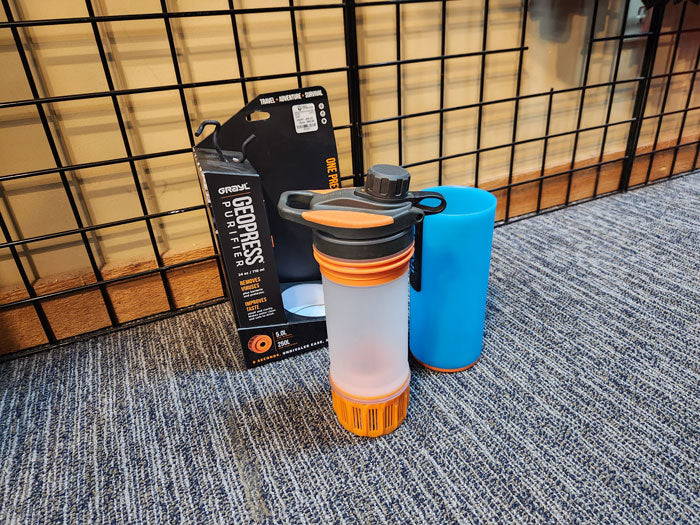 A physical purifier
A physical purifierTypes of Filters
Fortunately, most people don’t need to worry about viruses in their water, and a filter will be sufficient. All filters work the same way— water is forced through a very fine (usually 0.1 micron) membrane and emerges clean on the other side. The difference between filters is in the mechanism of filtration. When choosing a mechanism, it is important to consider the ease and speed of filtration, the size and weight of the product, and how much water you will need to filter and/or carry at a time. Here are some of the most common filter types:
Squeeze Filters- To operate a squeeze filter, users fill a bottle or bag with water and then squeeze the water through the filter into a clean reservoir. Squeeze filters are great for backpacking, as they are some of the lightest and most compact filters available. However, squeeze filters can be tiresome when filtering large quantities of water, as they require a lot of physical effort in squeezing.
Gravity Filters- Gravity filters look similar to squeeze filters, but instead of putting in effort to squeeze water through the filter, water flows on its own from a dirty reservoir through the filter and into a clean reservoir. Gravity filters are great for larger groups or filtering lots of water at the same time with minimal effort, but they are also heavier and larger than squeeze filters.
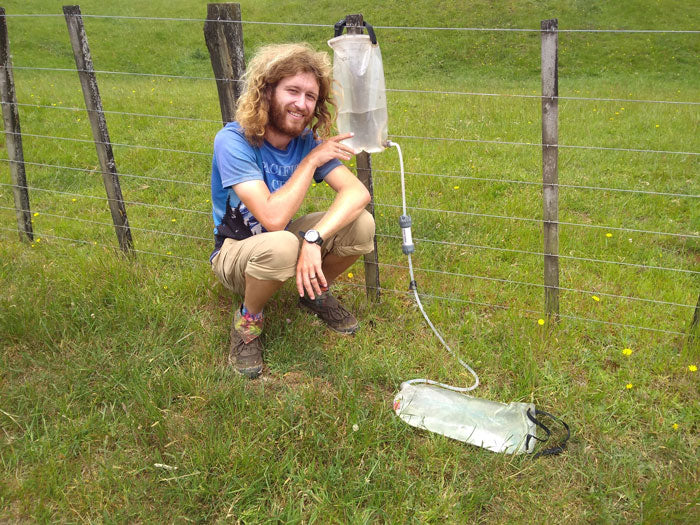 A gravity filter
A gravity filterPump Filters- Pump filters are an easy-to-use alternative to squeeze or gravity; a mechanical pump draws water up through a straw and through the filter. Pump filters are ideal for collecting water from ponds or puddles where scooping water might be difficult. Pump filters are usually larger and heavier than both squeeze and gravity filters.
Straw Filters- Straw filters are some of the easiest filters to use. They work just like a straw with the filter built into the tube, allowing you to drink water directly out of any source. Straw filters are ideal for boat trips, trail running, or trips where water will almost always be available. Unfortunately, straw filters don’t allow you to carry water once it has been filtered.
Filter Maintenance Once you have your new filter, there are a few things you should do to ensure that your filter will last. First: do not allow the filter to freeze! Because water expands when it turns to ice, this will cause the porous membrane inside the filter to crack, allowing bacteria and particulates through. If you are hiking or camping and suspect that the temperature may drop below freezing, make sure you put your filter inside a pocket or sleeping bag to keep it warm. Hard impact can also cause the filter to crack, so avoid dropping your filter. You can test if a filter is broken by blowing air backward through the filter. If the internal membrane is still intact, no air will pass through; if air does pass through, you should replace the filter immediately.
Filters also require regular cleaning, through a process known as backflushing. Over time, solid particulates will clog a filter, causing the flow rate to slow down. When backflushing a filter, clean water is forced through the filter from the clean back to the dirty side, carrying with it dirt and sludge that may have built up during regular use. Different filters have different processes for backflushing; make sure you know how to clean your filter after purchasing!

Conclusion
There is a lot to consider when purchasing a new filter. First you should think about where you plan to use the filter, and then decide if you need a filter or a purifier. Then, consider the types of trips you will be going on and the water sources you will be filtering from. Hopefully, this breakdown will help you choose the filter that will work best for you. Check out the staff picks below for some of my favorite filter recommendations!
Staff Picks
- Aquamira Water Treatment Drops - A fast-acting and versatile chemical purifier
- Grayl Ultrapress Purifier Bottle - A physical purifier that works like a coffee press, great for international travel
- MSR MiniWorks EX Microfilter - A classic pump filter
- Platypus Quickdraw - An ultralight squeeze filter, perfect for backpacking
- Platypus Gravity System - An easy-to-use gravity filter, great for group camp trips
